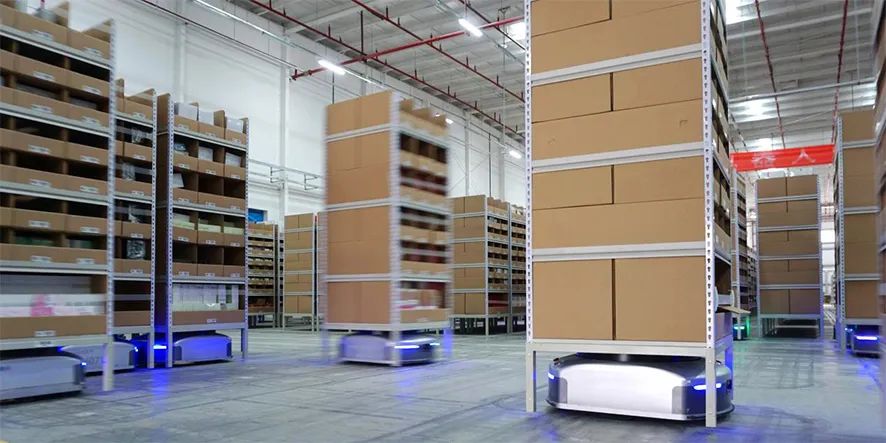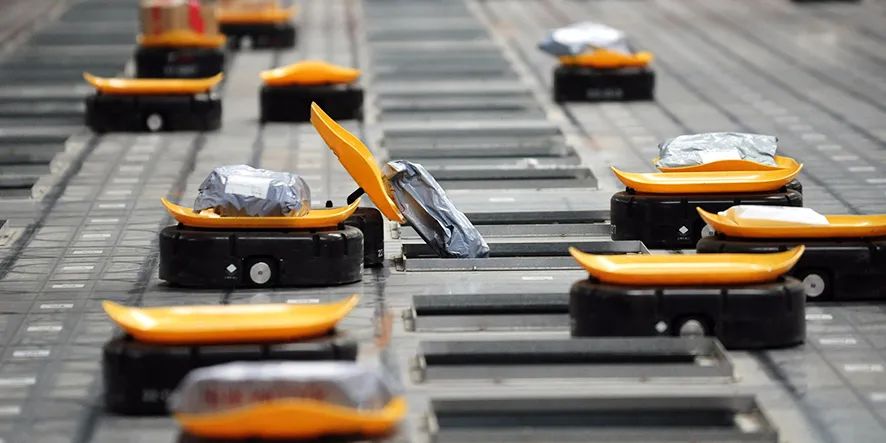1. The current development status of logistics robots
With the rapid development of the human economy, the rise in labor costs, and the popularization of artificial intelligence, robots have gradually penetrated the logistics industry, optimizing and improving logistics resources, logistics processes, and logistics efficiency, accelerating the development of the logistics industry.
In the field of logistics, domestic robotics technology started relatively late, and most warehouse robot manufacturers have only been established for a few years, but there are also opportunities in the challenges.
As of July 2023, the logistics robot industry has a total of 2068 patents. Among them, the number of patent applications in the logistics robot industry reached its highest level in recent years in 2021, with 502 applications; In 2020, the logistics robot industry had the highest number of patent authorizations, reaching 267.
Warehouse robots can efficiently and quickly complete various tasks, and have a huge market in the logistics industry. The establishment and rapid development of intelligent warehousing and smart factories will promote the large-scale application of logistics robots, and the market size will further expand. The annual market sales are expected to exceed 100000 units.



2. Key core technology development
Navigation and positioning technology: Multiple sensors such as LiDAR, inertial measurement unit, odometer, etc. are used to perceive the position of obstacles in the environment and their own motion status information. Combined with target tracking or position estimation algorithms based on multi-sensor fusion, the robot is located and the optimal path to reach the target point is planned. The main navigation methods used include magnetic navigation, laser navigation, RFID navigation, inertial navigation, visual navigation, GPS navigation, etc.
Motion control technology: By using two wheel differential drive or steering wheel control, combined with path tracking control algorithms, the robot can accurately reach its destination and improve the accuracy of robot motion control.
Autonomous driving technology: Utilizing multiple sensors such as in car cameras, millimeter wave radars, and ultrasonic sensors to perceive environmental information, SLAM technology is used to draw 3D terrain maps of roads, and combined with deep learning algorithms, it helps robots achieve autonomous movement and decision-making.
Multi robot cluster control technology: adopting a multi robot cluster action control strategy, using an exclusive lock mechanism to ensure that multiple robots will not collide at the same time; Choose the path with the lowest overlap to minimize the probability of multiple robots appearing on the same road as much as possible; Reduce the probability of deadlock occurrence through mandatory closed-loop path map design.
3. Industry standardization drives industry development
Logistics robots in our country are still in the embryonic stage, with an unregulated market and no industry standards. Users have low recognition of product functions.
In order to promote the development of the industry, the country has introduced relevant standards. In 2019, the National Standardization Technical Committee for Automation Systems and Integration issued the General Technical Specification for Logistics Robot Information Systems. In June 2020, the National Development and Reform Commission and the Ministry of Transport issued the Implementation Opinions on Further Reducing Logistics Costs. In July 2020, the National Development and Reform Commission and 13 other departments issued documents supporting the application of infrastructure for autonomous driving, automatic loading and unloading, and unmanned distribution. In August 2020, the Ministry of Transport also issued relevant guidance on smart transportation facilities and construction.
I have experience in the logistics robot industry, but currently there is no complete and unified national standard system. Compared with foreign countries, there is a significant gap in key components, core algorithms, etc., which leads to the insufficient application range of logistics robot products in China. The export of domestic logistics robot products to overseas markets requires different certification standards, such as UL certification in the United States, CE certification in the European Union, KC certification in South Korea, etc. Enterprises need to develop standards from multiple aspects such as production control, technological research and development, product quality, safety and environmental protection, which also limits the export of logistics robots in China, but also promotes the development and standardization of logistics robots in China.
4. Mutual aid and win-win situation in the industrial chain
Although logistics robots in our country have the support of national policies and the promotion of cutting-edge technology, the disorderly market competition and high cost of key technologies have prevented logistics robots from occupying a dominant position in the market.
In the field of industrial robots, the proportion of domestic suppliers in the domestic market has increased from 10% in 2014 to 35% in 2019, while the majority are still dominated by foreign first tier suppliers such as Fanuc, Yaskawa, ABB, and Kuka. It is predicted that the market share of foreign first tier suppliers is expected to decrease to 40% by 2025, indicating the potential of domestic robot suppliers. Their research and development and production capabilities will continue to rise, and resource integration will be achieved through industry mergers and acquisitions to occupy a dominant position in the market as soon as possible.
In the future, the domestic logistics robot industry needs to fully utilize open innovation methods such as industry chain and collaborative research and development capabilities, cross domain integration, and open source robot operating systems to develop logistics robot products from the perspective of customers, helping them improve operational efficiency, reduce costs, and create value.
Shenzhen Zhongling Technology, as a supplier of hub servo motors and drives, not only provides high-precision hub motors and drives for the logistics industry, but also diversified services for logistics robots. From no tire marks, providing protection levels, saving energy, customizing brake systems, limiting the fastest speed, increasing tire grip, detachable tires, customizing special programs, and many other aspects, it maximizes the satisfaction and enrichment of various functional indicators of logistics robots, promoting the diversified development of logistics robots.
Mailbox:[email protected]
Office address:303, 3rd Floor, Building B, Fenghuang Zhigu, Tiezi Road, Xixiang Street, Bao'an District, Shenzhen
Factory address:6th Floor, Building D, Changxing Zhigu Industrial Park, No. 16 Changlong Xinfeng Street, Huangjiang Town, Dongguan City